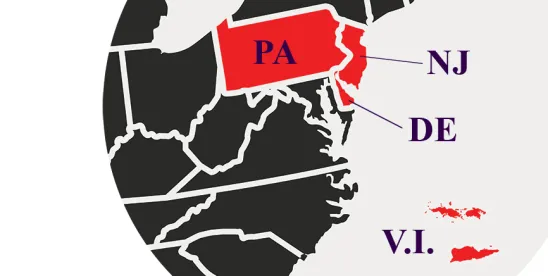Case: TrustID v. Next Caller Inc., 2021 U.S. Dist. LEXIS 134010 (D. Del. July 6, 2021)
Statute: 35 U.S.C. 315(e)(2)
(e) ESTOPPEL.—
(2) CIVIL ACTIONS AND OTHER PROCEEDINGS.—The petitioner in an inter partes review of a claim in a patent under this chapter that results in a final written decision under section 318(a), or the real party in interest or privy of the petitioner, may not assert either in a civil action arising in whole or in part under section 1338 of title 28 or in a proceeding before the International Trade Commission under section 337 of the Tariff Act of 1930 that the claim is invalid on any ground that the petitioner raised or reasonably could have raised during that inter partes review. (emphasis added).
Application
In 2016, the Federal Circuit in Shaw Indus. Group v. Automated Creel Sys., 817 F.3d 1293 (Fed. Cir. 2016), cert. denied, 2016 U.S. LEXIS 6641 (U.S., Oct. 31, 2016), interpreted the phrase “reasonably could have been raised . . . during that inter partes review” in § 315(e)(2) as applying only to grounds that could have been raised after institution of the IPR. In other words, estoppel did not apply to petitioned, non-instituted grounds because IPRs do not begin until institution.
Attempting to apply this statutory interpretation from Shaw, some district courts found that only petitioned, instituted grounds could be raised “during the IPR” and, therefore, were subject to estoppel. Non-petitioned grounds were excluded from the estoppel effect because non-petitioned grounds could not have been raised “during the IPR,” and were never part of an IPR.
However, Judge Robinson in Intellectual Ventures I LLC v. Toshiba Corp., 221 F.Supp.3d 534 (D. Del. Dec. 19, 2016), expressed frustration at being compelled to follow Shaw with respect to non-petitioned grounds:
Although extending the above logic to prior art references that were never presented to the PTAB at all (despite their public nature) confounds the very purpose of this parallel administrative proceeding, the court cannot divine a reasoned way around the Federal Circuit’s interpretation in Shaw.
Id. at 554.[1]
Other district courts concluded that for “reasonably could have raised” to have any meaning at all, it must apply to grounds the petitioner could have raised in its petition but did not. Those courts distinguished Shaw on its facts as not involving non-petitioned grounds.[2]
Then came the Supreme Court’s 2018 decision in SAS Institute Inc. v. Iancu, __U.S.__, 138 S. Ct. 1348, 200 L. Ed. 2d 695 (2018), which made institution of IPR petitions an “all or nothing” game; an institution decision must be binary—either all challenged claims are instituted, or all are denied. SAS, therefore, eliminated the possibility of petitioned, non-instituted grounds, which was the fact pattern addressed in Shaw.[3] The estoppel battleground thus turned to non-petitioned grounds and whether petitioner “reasonably could have raised” them.
Recent Order
A recent addition to the case law on this issue is TrustID v. Next Caller Inc., 2021 U.S. Dist. LEXIS 134010 (D. Del. July 6, 2021), in which the Delaware court applied estoppel to a defendant/petitioner seeking to assert invalidity in the district court litigation based on a reference that defendant/petitioner “reasonably could have raised” in its IPR petition.
TrustID sued Next Caller for patent infringement; in response, Next Caller filed an IPR petition, which was instituted and resulted in a final written decision finding some challenged claims unpatentable. Later, in the district court case, TrustID filed a motion to preclude Next Caller from raising six different prior art references. Trust ID alleged Next Caller was estopped from doing so under 35 U.S.C. §315(e)(2) because, in TrustID’s view, Next Caller could have raised those references in its IPR. Next Caller agreed to drop five of the references, leaving only one, Goldman, in dispute. The court noted that previous cases in the District of Delaware applied petitioner estoppel using the “skilled researcher conducting a diligent search” standard for determining if a petitioner reasonably could have raised a reference during an IPR. Id. at *2.
The “skilled researcher conducting a diligent search” standard involves a two-step process that was explained in Clearlamp, LLC v. LKQ Corp., No. 12 C 2533, 2016 WL 4734389, at *9 (N.D. Ill. Mar. 18, 2016) and cited with approval by the court:
-
identify the search string and search source that would identify the allegedly unavailable prior art and
-
present evidence, likely expert testimony, why such a criterion would be part of a skilled searcher’s diligent search.
TrustID, at *3.
Step 1 was uncontested. As to Step 2, TrustID argued that that the Goldman reference could have been found by a diligent searcher because:
(i) it is indexed in the same International Classification subclass as the [patent at issue] and indexed in the same USPC class & subclass as is listed on the “Field of Classification Search” on the [patent at issue];
(ii) a search limited to that USPC class and sub-class and using the words “ANI” and “caller ID” has seventeen results and Goldman is the 5th;
(iii) one of Defendant’s experts said he may have found Goldman when preparing the IPR petition;
(iv) it was included in Defendant’s invalidity contentions “several months after” the IPR petition.
Id. at *2.
The Court agreed with TrustID and granted the motion to bar Next Caller from raising the Goldman reference:
The words “ANI” and “Caller ID” appear in the patent numerous times – “Caller ID” about 20 times, and “ANI” about 80 times. Both are clearly important to the subject matter of the patent. Therefore, it seems likely that a skilled searcher conducting a diligent search would have used these terms and searched within the same USPC subclass as the ’985 patent. Further, the fact that Defendant included Goldman in its invalidity contentions filed just several months after the IPR petition confirms that a skilled searcher likely would have been able to find the reference.
Id. at *3.
However, the Court reached a different conclusion on Next Caller’s estoppel argument seeking to prevent TrustID from asserting claims found unpatentable in the IPR. The district court held that collateral estoppel did not apply to TrustID, because the appeal of the Final Written Decision in the IPR was still pending, and therefore not “final.” Moreover, the court noted that the issues in the IPR and the district court case were not identical. The district court ended its order with an interesting comment:
The Court understands that allowing Plaintiff to proceed at trial on claims that have been found by the PTAB to be invalid while at the same time preventing Defendant from asserting prior art defenses against these claims based on estoppel under § 315(e)(2) seems counterintuitive. That said, it is a permissible result that follows from the statute and relevant case law. And although the Court could perhaps stay the trial on the invalidated claims until after the decision in the appeal of the PTAB’s determination, to do so risks more significant inefficiencies for the Court and the parties, including a possible second trial in this already four-year-old case.
Id. at *9-10.
The decision therefore highlights important differences between the statutory estoppel provisions of 35 U.S.C. § 315(e)(2) and principles of collateral estoppel. Estoppel under § 315(e)(2) applies upon issuance of a Final Written Decision (“that results in a final written decision”) and is specific to the petitioner (“The petitioner. . . may not assert”). Principles of collateral estoppel, however, are judicially created and assess finality of the decision, identity of issues, and other considerations.
Take-Aways
Practitioners will want to remain current on the evolving law of petitioner estoppel. As with many provisions of the America Invents Act, the contours of the issue are still developing through case law.
A district court defendant who was a petitioner in an AIA post-grant proceeding should be prepared for the possibility that it will be estopped from raising invalidity arguments in the litigation that it could have raised in the earlier AIA proceeding, whereas the plaintiff-patentee will not be estopped from asserting claims found unpatentable by the PTAB.
Such a district court defendant should consider making clear that invalidity contentions in the district court litigation rely on references other than those that reasonably could have been raised in the AIA proceeding. For example, in the district court case, the defendant could consider using, prior art other than a patent or printed publication. Only patents and printed publications may be relied on for unpatentability arguments in an IPR, so by definition, prior art other than patents and printed publications could not reasonably have been raised in an IPR. Petitioners may also consider using an expert to address part (2) of the Clearlamp test. For example, an expert may provide testimony about the search tools available when the IPR petition was filed, as well as the specific search strings that were used with those search tools and why those parameters were reasonable and adequate to identify the prior art references at issue.
Stacy Lewis, a Law Clerk at Finnegan, contributed to this article.
[1] See also, Lighting Sci. Grp. Corp. v. Shenzhen Jiawei Photovoltaic Lighting Co., 2017 U.S. Dist. LEXIS 94182, at *5 (N.D. Cal. June 19, 2017); Verinata Health, Inc. v. Ariosa Diagnostics, Inc., 2017 U.S. Dist. LEXIS 7728, at *3 (N.D. Cal. Jan. 19, 2017).
[2] See, e.g., Network-1 Techs. v. Alcatel-Lucent United States, Inc., 2017 U.S. Dist. LEXIS 171123 (E.D. Tex. Sept. 26, 2017); Oil-Dri Corp. of Am. v. Nestlé Purina Petcare Co., 2017 U.S. Dist. LEXIS 121102, at *22-27 (N.D. Ill. Aug. 2, 2017).
[3] See, e.g., WiLan Inc. v. LG Electronics Inc., 2019 U.S. Dist. LEXIS 191173, at *19 (S.D. Cal. Nov. 4, 2019) (“SAS rendered the circumstances addressed by the Federal Circuit in Shaw a nullity.”); SiOnyx, LLC v. Hamamatsu Photonics K.K., 2018 WL 4177941, at *18-19 (D. Mass. Aug. 30, 2018).





 />i
/>i

